L.STU.2500 - Sheep Industry Capacity Building Scholarship
There is limited national data in extensive production systems for mortality rate and associated risk factors for Merino ewes.
| Project start date: | 02 June 2025 |
| Project end date: | 30 June 2025 |
| Publication date: | 24 July 2025 |
| Project status: | Completed |
| Livestock species: | Sheep |
| Relevant regions: | National |
Summary
This Sheep Industry Capacity Building scholarship was funded as an additional component of L.LSM.0036 Merino ewe mortality - prevalence, causes and mitigation strategies. The funds were granted to assist with conducting on-farm trial activities that directly contribute to the student's PhD research program.
Objectives
The objectives of the PhD were to determine:
• how the management factor of ewe body condition score (and other management actions) relates to the incidence of mortality (and the primary and secondary diagnoses made at post-mortem)
• how ewe condition score relates to primary and secondary diagnoses made at post-mortem
• the factors limiting the uptake of practices to reduce periparturient mortality in Merino ewes on-farm and how these can be mitigated.
Key findings
Preliminary analysis of Year 1 data (approx. 1,400 ewes monitored on 3 farms) determined that pre-lamb condition score was significant in determining survival outcome (whether a ewe survived or died), but the model using condition score could not adequately explain the outcome i.e. condition score was significant, but only one component of the outcome.
For the second year, 3,000 ewes on 3 different farms that have had their condition score monitored before or after joining will be assessed. This will enable data collection across different times in the production cycle as well as changes in condition score to be evaluated as risk factors.
Qualitative data analysis is ongoing. Producers are providing qualitative data to understand whether they utilise advisors, seek advice, identify factors that can and can’t be controlled in the production system, and their knowledge and use of condition scoring practices.
Benefits to industry
Understanding the risk of ewe mortality at varying condition scores will enable producers to make an informed decision about differential ewe management.
Future research
The visual condition scoring trial will assist producers with practice change leading to improved decision-making regarding condition scoring practices.
More information
| Project manager: | Daniel Forwood |
| Contact email: | reports@mla.com.au |
| Primary researcher: | The University Of Melbourne |


